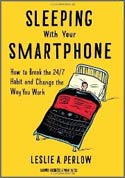|
|
|
Friday, August 7th, 2015
A Friday series exploring Startups and the people who make them go. Read all If the Shoe Fits posts here
 I admit to a long-time and deep fascination with innovation, startups and the people who drive them I admit to a long-time and deep fascination with innovation, startups and the people who drive them
Although many of the new apps and services provide no value to me personally, in most case I can understand their allure to those of a different mindset.
But now and then I read/hear about an idea I consider the height of stupidity, but that doesn’t mean it won’t succeed.
Right now, co-living spaces are at the top of my stupid list.
Live-work spaces aren’t new. HP started in a garage. Two decades ago they were a major force in the creation of what became SOMA in San Francisco. And home offices are everywhere.
But co-working spaces as envisioned by startups like WeWork are not only stupid, they are dangerous.
Crystal City WeLive location [Washington DC], the company will ultimately be renting out 360-square-foot “micro apartments,” which sit on top of WeWork’s co-working spaces. WeWork will offer more than 250 micro-apartments at that location, along with amenities like bike parking, an herb garden, and a library.
The idea is to eliminate the need to go outside your immediate environment.
It’s Silicon Valley efficiency taken to the extreme: you give up a normal work-life balance to eliminate your commute and live with all the amenities you need nearby. If you already hire people to take care of your other chores for you — you use Uber to drive you around and Wash.io to do your laundry — why not take it a step further and take care of your living arrangements through a startup too?
Residents not only give up any kind of work-life balance, they give up much of their connection to the real world and, more importantly, to their customers.
They will work/live/relax/socialize with people like themselves.
While losing contact with the extended world is bad, the potential for personal damage is catastrophic.
Shrinking the already tiny startup world will exacerbate the damage done by its ultra-competitiveness and worsen the rates of anxiety, depression and suicide already prevalent within it.
Image credit: HikingArtist
Posted in Entrepreneurs, If the Shoe Fits | No Comments »
Monday, October 27th, 2014

I was reading Oscar de la Renta’s obituary (fascinating guy) and a quote from him caught my eye.
“Being well dressed hasn’t much to do with having good clothes. It’s a question of good balance and good common sense.”
What grabbed me was the second sentence.
Because it doesn’t matter what you set out to do or how much money you spend on accouterments.
It doesn’t matter who you know, where you went to school, how many hours you work or how brilliant your vision.
It doesn’t matter because without balance and common sense you will fail.
Because balance and common sense are the foundation of anything you choose to accomplish.
Flickr image credit: James Jordan
Posted in Personal Growth | No Comments »
Tuesday, August 12th, 2014
 On August Max Schireson voluntarily stepped down from his CEO role to become Vice Chairman of MongoDB. On August Max Schireson voluntarily stepped down from his CEO role to become Vice Chairman of MongoDB.
He did it to spend more time with his family.
He wasn’t forced out and no pressure was applied.
Schireson took a hard look at his life and decided that, based on his personal value system, he needed to change it.
It wasn’t bad, just not what he wanted it to be.
My hat is always off to everybody who puts their personal values ahead of the way our society scores the game.
But what about the countless men who would make the same choice if circumstances didn’t prevent it?
The same things that impede women from viably combining aggressive careers with family also impede men—in spades to at least the 10th power.
The people who want to see their kids grow up; want a relationship with kids and spouse, want choice-sans-repercussions, want to live their values aren’t a minority.
Jack Welch famously stuck his foot in his mouth on this subject.
Five years later the old white guys are still running 75% of the Fortune 500 and many are still saying the same thing—as are too many of the 25% who are neither old, nor white, nor guys.
But what I find truly depressing is the prevalence of old-white-guy MAP in Millennials.
Image credit: Fortune Live Media
Posted in Culture, Ducks In A Row, Personal Growth | No Comments »
Sunday, October 21st, 2012
 Last week I shared quotes about living life; today I thought we’d check out commentary starting with what life is. Last week I shared quotes about living life; today I thought we’d check out commentary starting with what life is.
Sren Aaby Kierkegaard wrapped it up neatly when he said, “Life is not a problem to be solved but a reality to be experienced.”
Alan Bennett’s opinion is more depressing, “Life is generally something that happens elsewhere.”
Andrew Brown suggests that for many people these days ‘elsewhere’ refers to cyberspace, “The Internet is so big, so powerful and so pointless that for some people it is a complete substitute for life.”
Pearl Buck has, to my mind, a more upbeat and accurate belief, “Life is what happens while you’re busy making other plans.”
For the many people who buy into Bennett’s attitude, while laying the blame elsewhere, I recommend they consider the words of Louis L’Amour, “There comes a time when it lies within a man’s grasp to shape the clay of his life into the sort of thing he wishes to be. Only the weak blame parents, the times, lack of good fortune, or quirks of fate.”
Shaping your life usually means change. Change is a choice; a choice that every person makes many times during their life. William James offers three things to do to make it happen. He says, “To change your life;
-Start immediately
-Do it flamboyantly
-No exceptions”
Good advice, especially when we remember Winston Churchill’s wise words, “We make a living by what we get, but we make a life by what we give.”
But how do we know if we’re doing it correctly? We don’t; we can only do our best. As Goethe tells us, “Life can only be understood backwards, but must be lived forwards.”
If you do look backwards know that you will find many things that in hindsight would be better done differently or not at all, but rather than wasting time on regrets consider Tallulah Bankhead’s attitude, “If I had my life to live over again, I’d make the same mistakes, only sooner.”
I’ll leave you to day with this thought and a ling to my favorite Rule.
Diane Ackerman said, “I don’t want to get to the end of my life and find that I have just lived the length of it. I want to have lived the width of it as well.”
I vehemently agree and expounded on that in the very first Rule I posted way back in 2006.
Flickr image credit: Joe Wolf
Posted in Quotable Quotes | 2 Comments »
Saturday, September 15th, 2012
 I thought it was time to check back for a snapshot look at what’s happening in terms of people in the workplace. I thought it was time to check back for a snapshot look at what’s happening in terms of people in the workplace.
First, an overview from Boston Consulting Group’s six-part article (free registration required) that presents strong support for the idea that you get more from your people by providing more for them.
Those that excel in leadership development, talent management, and performance management, for example, experience substantially higher revenue growth and profit margins.
I remember the oil crash in the mid-1980s; I was working in executive search (I was a headhunter) and I watched as several recruiting firms devoted to oil and gas closed their doors when the industry crashed, laid off, stopped hiring and adopted Draconian HR policies. Those companies are currently reaping that which they sowed, with the exception of Devon Energy Corporation. (Booz & Company’s strategy + business requires free registration.)
When the oil price fell, companies stopped hiring, and a generation of geological science and engineering students chose other fields of study instead. Now, as turnover rates rise and competitors lure away skilled engineers, this talent gap means that human capital capabilities have been strained for nearly every company in the industry.
As a life-long single this article on the inequities of so-called work-life balance between those with kids and those without really resonated.
As a result, many Americans who work for companies that embrace flexible hours are confronting a sort of office class warfare. Some employees have come to expect that the demands of their children, in particular, will be accommodated — and not all of their colleagues are happy about it.
Quick; what has changed most since you started work? How ‘bout summertime Fridays?
Everyone leaves work at noon on Fridays, said Ben Morris, 31, a British photographer who was a host of one of the Thompson parties, which start at 3 p.m. “People just leave the office. And Mondays become a write-off because no one’s there on Friday. They’re playing hooky.”
“We used to go out a lot at night, but we’re getting older, concentrating on our future,” said Reign Apiim Artis, 23,
Flickr image credit: pedroelcarvalho
Posted in Expand Your Mind | No Comments »
Wednesday, May 23rd, 2012
 In our wired era being available 24/7 generates both bragging rights and work/life balance complaints and nowhere more so than the high-powered world of management consulting. In our wired era being available 24/7 generates both bragging rights and work/life balance complaints and nowhere more so than the high-powered world of management consulting.
It was in this world, as represented by a small team at Boston Consulting Group, that HBS professor Leslie A. Perlow initiated an experiment four years ago on the extreme benefits of “predictable time off” (PTO).
She shares the story and documents her findings in a new book called Sleeping With Your Smartphone.
Supposedly, the unpredictability working across time zones requires constant availability, but is that true?
“What caught our attention was that the more people were on, the more unpredictable their work time seemed to become.”
The key to success was predictability.
Perlow’s research started with a small team and three basic steps.
- “First, team members have to agree on a specific unit of time each week that everyone can turn off. Not at the same time, obviously, since team members have to cover for each other. In our first experiment, it was one night a week. But whatever the goal, it has to be valued by the team, as a group. It has to be small but doable. And it has to be concrete and measurable.”
- “Second, the team needs to meet weekly to discuss the challenges and successes they’re facing as they try to achieve the goal. These meetings are crucial for PTO to work, but they offer much more. They’re a regular forum for productive conversations about work, conversations that empower people to speak up. In theory, people are speaking up about process, which allows the team to meet the time-off goal. But really they’re speaking about all aspects of the work experience.”
- “Finally, the team’s leaders — bosses, managers — have to show support for the project and for team members’ efforts. That’s not just about allowing colleagues to speak up and to use their time off. It’s also about doing the same themselves.”
Four years later 86% of the consulting staff in Boston, New York, and Washington, DC are practicing PTO.
According to BCG’s CEO, Hans-Paul Bürkner, the process unleashed by these experiments “has proven not only to enhance work-life balance, making careers much more sustainable, but also to improve client value delivery, consultant development, business services team effectiveness, and overall case experience. It is becoming part of the culture—the future of BCG.”
Retention is up, job satisfaction is up, productivity is up, client satisfaction is up.
Given proven results and a reliable methodology to follow, PTO can be instituted by any manager at any level even where the over-arching culture is hostile.
Nor is there any need for HR approval.
Go ahead; reap all those rewards and be a hero to your team—all it takes is 20 bucks and synergistic MAP, both of which are in your direct control.
Image credit: Harvard Business School
Posted in Change, Culture | No Comments »
Sunday, April 29th, 2012
 Work; everyone works, one way or another, paid or not. Work; everyone works, one way or another, paid or not.
Some people work hard, while some hardly work; or as Sam Ewing said, “Hard work spotlights the character of people: some turn up their sleeves, some turn up their noses, and some don’t turn up at all.”
According to Pearl Buck work is good for your health—at least is if you like it, “To find joy in work is to discover the fountain of youth.”
Teddy Roosevelt offered yet another view of why on the value of work, “Far and away the best prize that life has to offer is the chance to work hard at work worth doing.”
Most successful people will tell you that if you do what you love the money will follow, but not everybody believes that.
I have a kind of mantra that I share with clients, ‘People who join you for money will leave for more money.’ Henry David Thoreau said something similar long before, “Do not hire a man who does your work for money, but him who does it for love of it.”
Joseph Campbell had another insight to the person who is only in it for the money, “I think the person who takes a job in order to live – that is to say, for the money – has turned himself into a slave.”
But even when we love our work we all like a pat on the back and having our work appreciated, but rather than trying to force the acknowledgment take a tip from Henry J. Kaiser, “When your work speaks for itself, don’t interrupt.”
Finally, it’s Stevie Wonder who sums it all up perfectly, “Ya gots to work with what you gots to work with.”
stock.xchng image credit: hisks
Posted in Quotable Quotes | No Comments »
Friday, March 2nd, 2012
A Friday series exploring Startups and the people who make them go. Read all If the Shoe Fits posts here
 Over the past few days we’ve been discussing the importance of disconnecting, the destructive force of 24/7 work and what drives people to do it. Over the past few days we’ve been discussing the importance of disconnecting, the destructive force of 24/7 work and what drives people to do it.
People who found companies do so because they have a vision; they recognize a need as well as a way to fill it.
The real work comes between recognition and fulfillment—sharing and evangelizing the vision, building a framework within which the vision can become reality and then sharing the reality with the world at large.
The middle step, the framework, is what differentiates short-term success from long-term.
The middle step requires a cultural vision that also needs to be shared and evangelized.
There is much truth in the analogy that startups are like children and, like parents, founders need to decide ahead of time the value system they want their child to absorb.
“People feel this constant need to be connected. There’s no priority structure. Everything is urgent. Everything is red flagged.” Nancy Rothbard, a Wharton management professor
As founder you have a far-reaching choice to make; far-reaching because it will affect your company for years to come and determine if your child is
- respectful and values the people in and around it; or
- a spoiled brat that sees the world only in terms of mememememememe.
Option Sanity™ is values-based.
Come visit Option Sanity for an easy-to-understand, simple-to-implement stock process; so easy a CEO can do it.
Warning.
Do not attempt to use Option Sanity™ without a strong commitment to business planning, financial controls, honesty, ethics, and “doing the right thing.”
Use only as directed.
Users of Option Sanity may experience sudden increases in team cohesion and worker satisfaction. In cases where team productivity, retention and company success is greater than typical, expect media interest and invitations as keynote speaker.
Flickr image credit: HikingArtist
Posted in Culture, Entrepreneurs, If the Shoe Fits | No Comments »
Thursday, March 1st, 2012
Tuesday I wrote about what some companies are doing to force their people to disconnect and yesterday I offered some ideas about how individual managers at any level can encourage it.
Is any of this applicable to startups?
Actually, it’s especially true in startups where environments, which 30 years ago meant 80-hour weeks, but have increased to near 24/7.
Not only do we have difficulty maintaining personal boundaries with work because our lives and jobs are so enmeshed with technology, but we also feel intense pressure from our organizations to be “always on” and immediately responsive to calls and emails outside of normal working hours. —Knowledge @ Wharton
That’s a pretty accurate description of most founders and, like it of not, they are their company’s primary role model—the person everyone tries to channel.
Do a little eavesdropping any place where startup people congregate and you may leave with the impression that pulling all-nighters is a competitive sport.
But people are like batteries and down time is the equivalent of an alternator.
If the alternator on your car stops working and you keep driving eventually the battery dies.
Come back tomorrow for a look at the benefits of extending founder vision beyond your product.
Flickr image credit: Doug Waldron
Posted in Entrepreneurs | No Comments »
Wednesday, February 29th, 2012
 Yesterday I said I would offer some ideas for helping people on your team disconnect, since not all companies are willing to shut down email at night in order to force the issue. Yesterday I said I would offer some ideas for helping people on your team disconnect, since not all companies are willing to shut down email at night in order to force the issue.
Even the ones that do might not accomplish what they intend given that there are plenty of ways to continue working without corporate email.
So what can one manager do to change attitudes within her own group?
As usual, much of the answer is found within MAP (mindset, attitude, philosophy™), both yours and your team’s.
For your team, one of the most important is recognizing that digital addiction is more about its effect on ego than a love of gadgets.
“Being a successful member of middle class society is showing our dedication to professional work and being available at all hours of the day.” –Carolyn Marvin, a professor at the University of Pennsylvania’s Annenberg School for Communication
Changing that perception requires more than a statement or directive from you.
I’ve said over and over “to change what they do change how you think.”
You need to change your beliefs and your actions.
There is no way you can tell your team to take a digital break if you don’t take one.
Why would anyone do what you say when they see you doing the opposite?
If they can always reach you nights, weekends and vacation by email or phone do you really believe that they will disconnect?
Worse, if you actively contact them during those times they wouldn’t dare not to be available.
To make disconnecting truly productive from both your/company’s point of view and the individuals’ requires an open conversation.
Use the article Wharton article as the basis for a “say anything” discussion and together create a holistic digital framework that provides the downtime needed to have a life and recharge without cost to organizational accomplishment, personal perceptions or ego.
I guarantee that if you make the time and commit to doing the work your group’s productivity and creativity will skyrocket while turnover drops like a stone.
Join me tomorrow for a look at how disconnecting plays in a startup.
PS Happy Leap Day!
Flickr image credit: Mike Licht
Posted in Business info, Communication, Culture | No Comments »
|
 Subscribe to
Subscribe to
MAPping Company Success
About Miki 
Clarify your exec summary, website, etc.
Have a quick question or just want to chat? Feel free to write or call me at 360.335.8054
The 12 Ingredients of a Fillable Req
CheatSheet for InterviewERS
CheatSheet for InterviewEEs™
Give your mind a rest. Here are 4 quick ways to get rid of kinks, break a logjam or juice your creativity!
Creative mousing
Bubblewrap!
Animal innovation
Brain teaser
The latest disaster is here at home; donate to the East Coast recovery efforts now!
Text REDCROSS to 90999 to make a $10 donation or call 00.733.2767. $10 really really does make a difference and you'll never miss it.
And always donate what you can whenever you can
The following accept cash and in-kind donations: Doctors Without Borders, UNICEF, Red Cross, World Food Program, Save the Children
*/
?>About Miki
About KG
Clarify your exec summary, website, marketing collateral, etc.
Have a question or just want to chat @ no cost? Feel free to write
Download useful assistance now.
Entrepreneurs face difficulties that are hard for most people to imagine, let alone understand. You can find anonymous help and connections that do understand at 7 cups of tea.
Crises never end.
$10 really does make a difference and you’ll never miss it,
while $10 a month has exponential power.
Always donate what you can whenever you can.
The following accept cash and in-kind donations:
|
 I admit to a long-time and deep fascination with innovation, startups and the people who drive them
I admit to a long-time and deep fascination with innovation, startups and the people who drive them





 Last week I shared
Last week I shared  I thought it was time to check back for a snapshot look at what’s happening in terms of people in the workplace.
I thought it was time to check back for a snapshot look at what’s happening in terms of people in the workplace. In our wired era being available 24/7 generates both bragging rights and work/life balance complaints and nowhere more so than the high-powered world of management consulting.
In our wired era being available 24/7 generates both bragging rights and work/life balance complaints and nowhere more so than the high-powered world of management consulting. Work; everyone works, one way or another, paid or not.
Work; everyone works, one way or another, paid or not.
 Yesterday I said I would offer some ideas for
Yesterday I said I would offer some ideas for 
